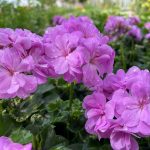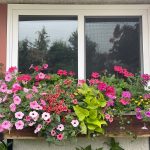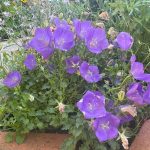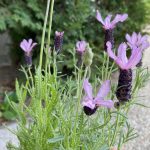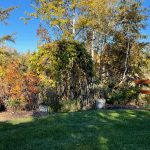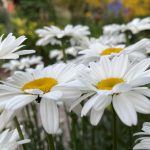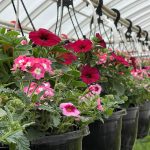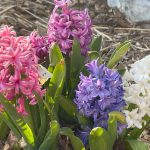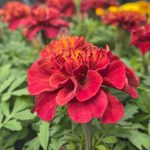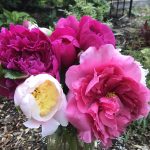Planning and designing a garden can be a difficult task. You need to know where in your yard there is more or less sun, protection from wind, overhead coverage, and more. Being intentional for anything you’d like to accomplish mitigates frustrating and unwanted journeys back to the drawing board or back to the store.
Walk along through 4 simple steps to plan your next, first, or current, garden.
Having a Garden Plan is Valuable
Think of a garden plan as a blueprint or a map.
Without a map, you don’t know where you’re going or where you may land. A plan will logically guide your steps.
Planning a garden with intentionality before you plant offers several benefits.
The Benefits of Having a Garden Plan or Strategy

A garden plan will keep the project focused.
Just like building a house or any other project, a plan keeps tasks in order and guides timing and direction. A garden can be a work that starts small, one that you add to incrementally each new growing season, or it can be one that is done all in one season.
A garden strategy prioritizes tasks.
A step-by-step plan will guide your list of projects into an organized list of bite sized pieces. You can arrange your gardening projects in order with each phase building on the next.
Planning your garden ahead of time will save you money and keep you on budget.
Once you have your garden plan together, you will be able to make a list of all the supplies you require, and the shopping completed in a one and done trip! Repeated trips and do-overs cost money.
A garden strategy saves time.
Having to stall a portion of your project because it was disorganized or interrupted by having to make multiple trips to the store is the worst!
Instead, use your time effectively by putting in extra time on the front end at the planning stage. Detailed plans won’t eliminate the unforeseen or unexpected, but they will cut down on the mix-ups.
A written garden game plan will decrease stress.
A plan will keep you from being overwhelmed. Once the plan is written, you don’t have to hold them all in your brain. You can decide how big or small the pieces are and how they fit together. A master plan gives you focus on timing and direction, and when to start, and when to stop.
How To Plan the Garden That’s Right for You

These four steps will help you brainstorm and purposefully design the garden that fits your needs, budget, and time.
1. Narrow Down Your “Why”
This first planning step is a needs assessment. Figure out what you need from your gardening space.
The purpose for your garden will be the driving force for its design. So, dream, envision, and imagine what you’d like for your garden space.
Here’s a few questions to help you brainstorm about your garden:
- What is the thing you’d like to receive the most from your garden?
- Do you want your garden to be a place of relaxation? Would you like your garden to be a place of gathering with friends and family?
- Would you like your garden to be a hub of activity? Is it a place where children will play? Do you want it to be a place to express your creativity? How will you facilitate these activities?
- Will your focus be on growing fresh food? What kinds of vegetables, herbs, or fruits do you dream of growing?
- What about flowers? Is growing flowers your objective? Would you like to grow flowers for fresh cutting? Would you like a pollinator garden that attracts bees and butterflies? Would you like to focus on fragrant flowers?
- Would you like to grow in pots, in raised beds, or in the ground?
- What kind of structures would you like in your garden? Would you like to have things like a seating area, a hot tub, a patio, a pergola, a picnic table, a trampoline, a sandbox, a play structure, etc.? What about sidewalks and pathways?
2. Study Your Gardening Space

No two gardens are the same. Each gardening space has its own unique environment involving multiple factors that impact how plants grow in your area.
Not all gardens are situated in a yard; some gardens are on balconies and in shared spaces.
Be a student of your space and get to know the characteristics of your gardening location. All these details will determine what you can grow in your garden.
Here’s a place to start to familiarize yourself with your growing space:
- Know your garden dimensions — The calculated area of your garden will guide what you can do with your space. Measure the size twice to be sure of space allocation.
- Know your garden’s sun exposure — Sunlight is life. Determine how the sun moves through your space. It’s better to know the number of hours of sun that your garden gets rather than the direction your garden faces in relation to your home, as in your backyard faces south or west. The amount of sun your space receives will determine the kinds of plants you can grow.
Ask questions like this about your gardening area:
- How does the sun move in your garden during the day? Where does the sun begin in the morning, and where does it land in the evening?
- What casts shade on your garden? Are there other houses, buildings, fences, eves, trees, or other structures that block the sun? What time of day does this happen?
- How do wind currents travel through the garden? Air movement affects which plants will grow successfully. Some gardens have a prevailing wind all the time while others are sheltered. What about dryer vents? Is there a dryer vent puffing hot air into a garden bed?
- How does water flow through your garden? Wet spots and dry areas determine the kinds of plants you can grow. Do you have any low-lying areas where the water runs and sits following rain? Are there dry patches? Do you need to do any leveling? Are there any downspouts that drain in your space?
- What is the soil like in the garden? Get to know your garden’s soil type, soil quality is quite variable from place to place. How much topsoil do you have? Is it rich in organic matter, or is it more clayish, fine, or silty? Soil quality gives you clues to what you may grow or how you may need to amend the soil in your garden plan.
- What kind of fauna travel through your gardening space? Do you have animals, wild or domestic, cruising through your gardening space? Animals have an impact on your garden and influences what you can grow and whether or not fences need to be included in your design.
3. Dream, Design, and Draw Your Garden

Here’s where the real fun begins. Let your ideas percolate, let your imagination fly, and let the drawing begin.
Pick the tools you’d like for this: pencil & paper, computer, paper & blocks, your creative self, and let it go, Elsa!
Get ready to draw in the concepts; the next section is about figuring out the details. The internet is full of great garden schemes and ideas. Take some time to see what’s new, and what’s tried and true in garden design.
Take your time and let ideas percolate slowly and thoroughly, and follow these steps as you draw your garden plan:
- Step 1: Start with drawing the perimeter of your gardening space on a grid to get the dimensions right.
- Step 2: Sketch in the permanent structures that don’t move once they’re in place. These are things like sidewalks, pathways, pergolas, or raised beds.
- Step 3: Trees and Shrubs. Would you like to include trees and shrubs in your plan? If yes, where would you like to put them? Remember to consider their optimal growing environments for soil, light, and moisture.
- Step 4: Draw in any flower, vegetable gardens, and lawn. Where would you like to place them? Consider things like mature height and season of bloom as you pencil the fine points in this step.
4. Figure out the Details: Which Plants are Right for Your Garden?

This final phase is about getting down to the nitty gritty of which plant material is correct for your growing space. It’s a step that can take a significant amount of time as you work out the details.
Research and explore the kinds of trees, shrubs, and other plants you’d like to grow. If you have no idea where to start, talk to gardening friends who have some experience or consider hiring a consultant or someone knowledgeable in landscape design.
Here are some things to set thoughts in motion:
First, know your horticultural growing zone. Find out what horticultural zone you live in, and it will be your guide to choosing the correct variety of any tree, shrub, or perennial plant material you need for your garden space. Match the plant material to your growing zone.
Related: What are Plant Growing Zones and How do They Work?
Know the seasons of bloom for the plants you plan to put into your garden. Trees, shrubs, and perennials all have unique seasons of colour. Many trees and shrubs have a spring bloom, but there are some that bloom later. For example, fruit trees bloom in spring, and hydrangeas bloom in the fall.
Research perennial bloom cycles. Perennials have precise bloom times; they are classified as spring, summer, and fall bloomers. However, there are a few of perennials that flower continuously into fall once they get going. A few examples are Heliopsis, Gaillardia, and Coreopsis.
If you are looking for continuous flower colour, Annuals bloom nonstop when they are regularly deadheaded. Annual flowers are planted each spring (as in annually, hence the name ‘annual’) and are available for complete shade, full sun, and locations that are a mix of both.
An excellent strategy for perpetual flowering is to plant perennials and annuals together in the same flowerbed. Annuals pull through consistent colour while perennials come in and out of their seasons of bloom.
Plant life span is another consideration when planning a garden space. Annual flowers only live for one season. Trees, shrubs, and perennials all have a life span, just like humans. Perennials like Peonies and Dictamnus (Gas Plant) can live up to 70 years, while others like Lupines only live for 2. Pine, Spruce, Elm, and Ash trees live long lives, clocking in at least 40 -70 years. Lilac shrubs can live up to 70 years, too.

Related: The following posts give more details on annuals and perennial flowers –
- How to Grow Great Lilacs in Zone 3: Fragrance, Beauty & So Much More
- The Best Annual & Perennial Flowers for Your Zone 3 or 4 Pollinator Garden
- 10+ Amazing Annual & Perennial Flowers to Grow in Full Sun
- How to Master Your Shade Garden: A Complete Guide to Growing Annuals & Perennials in the Shade
- 4+ Great Fall Blooming Perennial Flowers for the Prairies
- The Best Smelling Flowers to Grow in Your Garden
Fresh fruits and vegetables are the best. Dream about the vegetables you would like to grow and research them. Tomatoes are a great place to start. Beans and peas are fun and easy to grow too.
Related: Check out the following posts for food growing ideas –
- The Ultimate Vegetable Companion Planting Guide from A-Z
- The Secret to Growing Great Strawberries in Planter and Hanging Baskets
- How to Grow Great Basil in Alberta
- How to Grow Great Cucumbers in Alberta
- How to Grow the Best Tomatoes in Alberta
- How to Grow Garlic in Alberta
Related: The following comprehensive charts are available for purchase on my online store:
Garden Planning is a Good Thing
Planning never goes out of style. My dad, Charlie, at 90 years of age, still plans his vegetable garden on purpose and on paper. He shares his ideas with me, and we plant his garden together in an orderly and organized way, according to his plan.
It is my dream that this guide will give you an excellent start to getting a new garden planned or just make your current gardening space better and more beautiful!
©Sharon Wallish Murphy ©Gardening with Sharon












